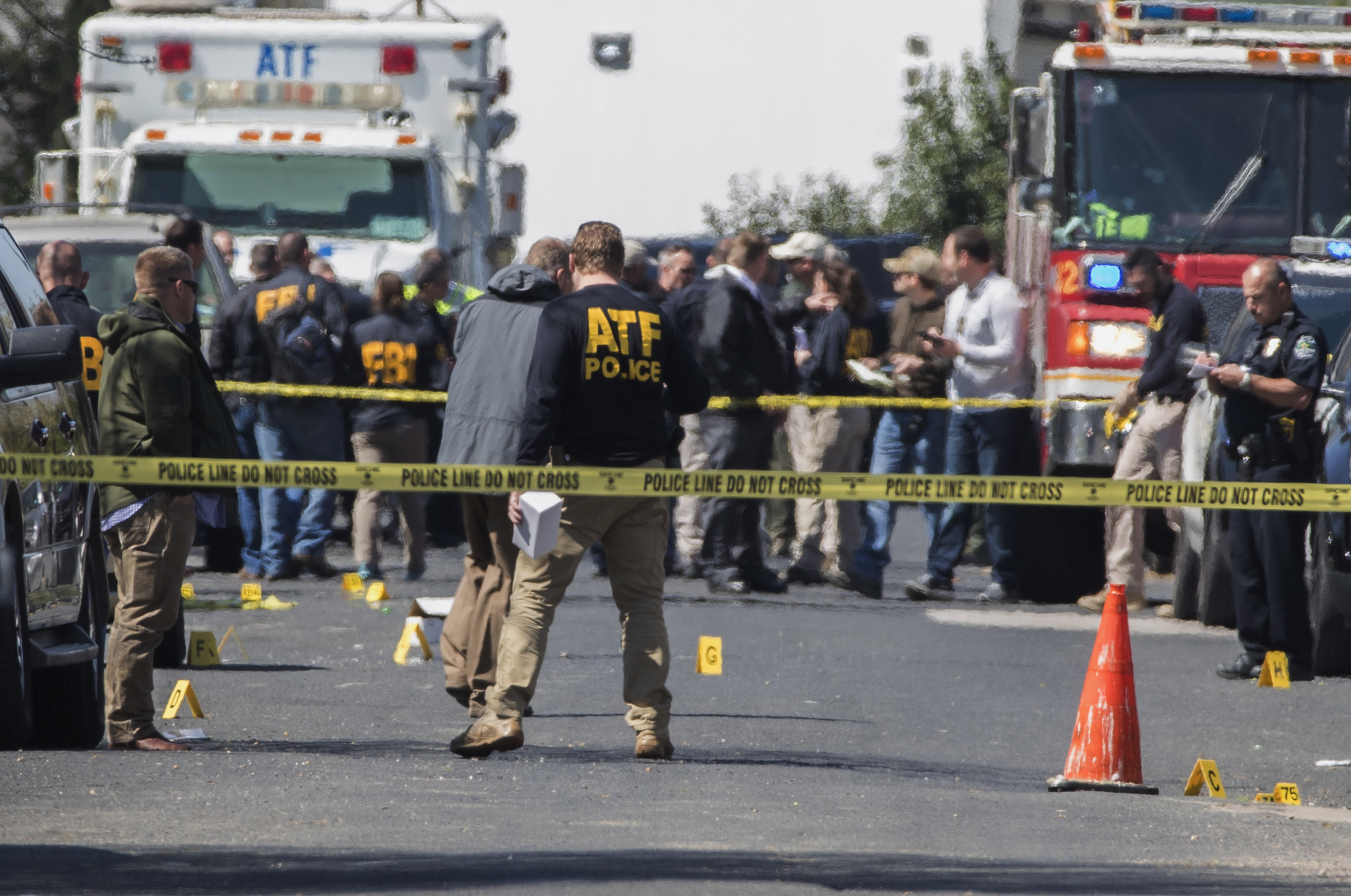
By WILL WEISSERT
PAUL J. WEBER
Associated Press
AUSTIN, Texas (AP) — Two package bomb blasts a few miles apart killed a teenager and wounded two women in Austin on Monday, less than two weeks after a similar attack left a man dead in another part of the Texas capital. Investigators said the bombings are probably connected, and they are looking into whether race was a factor because all of the victims were minorities.
The blasts unfolded just as the city was swelling with visitors to the South By Southwest music festival. The first of Monday’s attacks killed a 17-year-old boy and wounded a 40-year-old woman, both of them black. As Police Chief Brian Manley held a news conference to discuss that attack, authorities were called to the scene of another explosion that injured a 75-year-old Hispanic woman. She was taken to a hospital with potentially life-threatening wounds.
Authorities suspect that both of Monday’s explosions were linked to a March 2 attack that killed a 39-year-old black man. All three blasts happened as the packages were opened, and officials urged the public to call police if they receive any unexpected packages. “This is the third in what we believe to be related incidents over the past 10 days,” Manley said while
briefing reporters near the site of Monday’s second explosion. He at first suggested that the blasts could constitute a hate crime, but later amended that to say authorities had not settled on a motive.
“We are not ruling anything out at this point,” said Manley, who said the intended targets were not clear since multiple people live in the homes where explosives were placed. “We are willing to investigate any avenue that may be involved.” The police chief refused to provide many details about how the explosives were packaged, citing the ongoing investigation. But he said they were an “average-size letter box” and “not particularly large.”
In all three cases, he said, the packages did not appear to have gone through the U.S. Postal Service or private carriers like UPS. They were left on doorsteps without a knock or ringing of doorbells. The explosions happened far from the main events of the wildly popular festival known as SXSW, which brings about 400,000 visitors to Austin each year. Manley urged visitors to “be aware of what’s going on.”
“Enjoy yourself. Have a good time,” he said. “There’s no reason to believe that you are at any greater risk other than be aware, look for things that are suspicious.” In a tweet, organizers of the festival said “SXSW is heartbroken by the explosions in Austin,” and they urged visitors to stay safe. Gov. Greg Abbott offered a $15,000 reward for information leading to an arrest.
Four years ago, a driver plowed through a barricade and into festival-goers, killing four people and injuring many others. Extra security measures were taken, including additional policing, tougher security checks and brighter street lighting.
The three explosions occurred in different parts of east Austin, which is east of Interstate 35, the highway that divides the city. The east side has historically been more heavily minority and less wealthy than the west side, although that has changed as gentrification has raised home prices and rents throughout the capital. Monday’s first blast happened at a home in Springdale Hills, a leafy neighborhood of houses mostly from the 1960s and 1970s. After the attack, officials in hazardous materials suits came and went regularly.
That was about 12 miles (20 kilometers) from the home where the March 2 package bomb killed 39-year-old Anthony Stephan House. House’s death was initially investigated as suspicious but is now viewed as a homicide. Monday’s second explosion occurred around the Montopolis neighborhood, about 5 miles south of the day’s first blast.
Joanna Samarripa, who lives around the corner, said she saw a woman slumped in the doorway of the home after rushing over moments after the explosion. “The cops were running and telling everyone ‘Get out of the house! Get out of the house!'” Samarripa
said. “I’m still scared. I’m still shaking. I don’t even want to leave my daughter no more.”
Neighbor Keith Reynolds heard what sounded to him like a propane explosion. He rushed outside and saw a cloud of hazy smoke and others on his street running to help.
“There was a horrible screaming. You knew that something terrible was happening,” Reynolds said, adding that the victim’s body was riddled with holes as emergency responders took her out of the house and into an ambulance. “It’s just a regular family neighborhood,” he said. “It’s just a grandmother, you know what I mean? Like, why?”
FBI teams from Austin, San Antonio and Dallas were investigating as was the Bureau of Alcohol, Tobacco, Firearms and Explosives. Manley said anyone receiving a package they were not expecting should call 911. “Under no circumstances should you touch them, move them or handle them in any way,” he said. The victims in Monday’s blasts were not immediately identified.



















